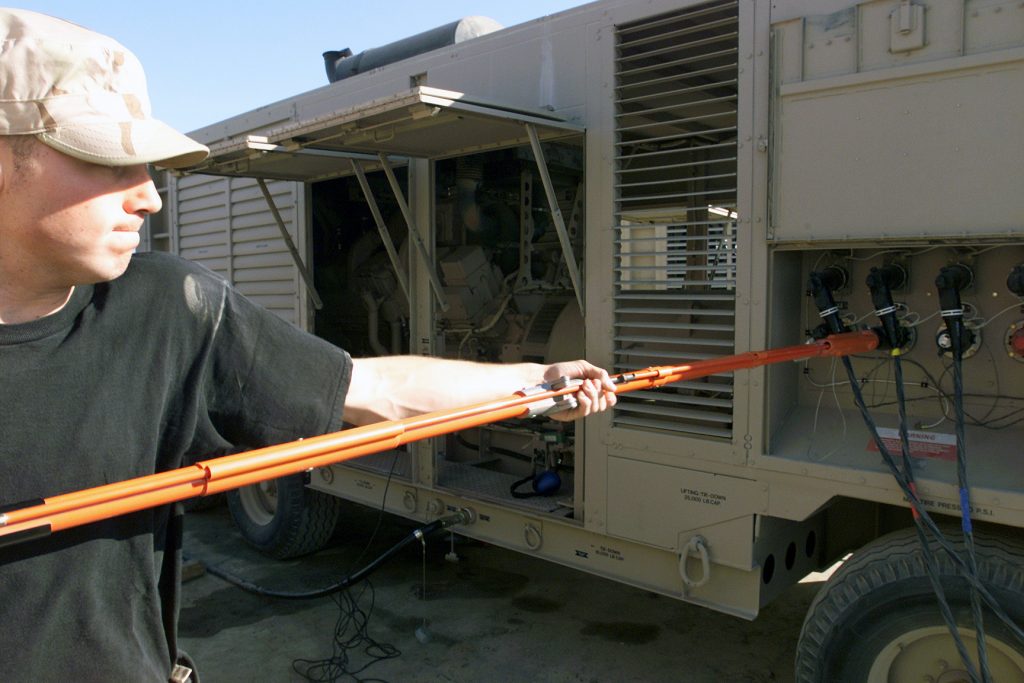Why You Need To Get Your Generator Load Bank Tested Yearly
Power outages occur quite often, so it is important to make sure your backup systems are working properly. You should routinely have your standby generators checked by professionals. Since the majority of generator maintenance in preventative, contracts are offered to service and inspect them. You can ask at the time of installation when this testing should be scheduled.

A standard part of preventative generator maintenance is load-bank testing. This ensures that it will function properly when a power outage occurs. The engine’s ability to provide the needed power for an emergency situation is specifically tested. Typically, a generator will run at a lower level than its rated output ability, so this load-bank test creates an artificial load that generates a temperature to test efficiency. This ensures that in an outage, your generator will function properly.
Any generator needs to be tested after installation at periodic intervals so you can be assured it will perform as intended during an outage. The test specifically uses a load that resembles the building’s electricity load to test its efficiency performing at the level required. During this time, if any problems are detected, they can be fixed before the generator will be needed.
With regular use and wear, generators develop carbon buildup or wet stacking in the combustion and exhaust chambers. These problems can end up causing poor performance, and in turn, end up using more oil and fuel. It is better to discover any problems before the generator is actually needed.
Just having the generator running will not be a sufficient test; it needs to run at a full load to ensure its performance during an outage will be efficient. If it is not tested at full load, there will be no guarantee that during an outage, it will perform well, and you could end up without power.
The load-bank tests check for certain functions to be running properly. You want to make sure the engine provides the desired power levels, the alternator provides the right voltage stability, and the control systems are all efficient under the different loads. The tests also check for a stable frequency, oil and fuel pressures, and the overall performance of the system components. It identifies potential weak spots and helps to remove buildup from the pistons.
When it comes to the critical time that your standby load bank for rent will be needed, you want the components to work together efficiently. Professionals perform the load-bank tests for this reason, so it is best to schedule this service at the recommended times. The minimum frequency should be at least annually which will help to extend the life of both the engine and alternator. The performance of this test will give you peace of mind because you will know you are covered when an outage happens.
What Is A Load Bank And Why Do I Need One?
Load banks are an important asset for any industry to have because they ensure the proper running of equipment in the event of power outages. Specifically, a Load Bank Hire can create a load similar to daily use and test a power source for running efficiency. By imitating the original load, there is no chance of random or unpredictable current. Load banks are a contained system unit that integrates both controls and accessories into one installed location. The power source will supply the power, but the load bank uses this energy to protect and support the power source as well as test it.

Where do you use a load bank?
There many applications for the load bank, including battery systems, inverters auxiliary and ground power units, engine generators as well as hydro, aircraft and wind generators. Load banks have several purposes across a number of industries.
Manufacturing testing
Engine cell testing: load banks are used to test new engines at varying mechanical loads to ensure that the engines can function efficiently in any circumstances. Dynamometers are used to connect the engine to the load bank and once connected it monitors performance making any adjustments as needed.
Generator cell test: manufacturers of standby generators also test their units with load banks. By using certain loads the endurance and stability of the unit can be measured. If there are any errors, the load bank can calibrate the generator allowing it to meet the desired tolerance and required specifications.
Field testing and exercise
Once generators are installed, it is a good idea to get them tested regularly to make sure they maintain top level performance. Load banks are used to verify generators because they imitate the load of the facility and if there are any problems, they can be identified before the generator is actually needed in an emergency situation.
Wet-stacking elimination
With regards to diesel generators, load banks are also used to ensure the units can properly consume fuel. When fuel consumption is not optimal, wet-stacking occurs which is the buildup of oils and grease which interferes with generator function and hinders efficiency.
Demonstrations
When potential customers want to see the function of a generator, load banks will be used to run them for demonstration purposes. This allows for the identification of a specified performance level, which can then be outlined in any contract for purchase. This way the buyer has written proof of testing and expected performance levels.
Power outages are more common than people think, and they can be a major inconvenience to factories, businesses or any professional or household setting. Using a load bank to test your generator during the year will make sure it can perform at the desired level and keep business going during an outage. Additionally, their use for demonstrations and correcting systems such as turbines and batteries as well as providing optimal loads for primary power sources makes them handy to have around.
Load banks also help to protect internal components of the generator and provide information for any needed repairs. Keeping your standby generator in good condition is a necessity because emergencies can occur at any time.
Why Load Bank Testing Is Essential For Preventative Maintenance
Generators are designed to provide reliable power to your business during situations when power from the grid is lost or temporarily unavailable. In the event of power outages, you want assurance that business can continue, which means you need a standby generator you can rely on. It can be a disaster when you are faced with an emergency situation and find yourself with a faulty or unreliable generator and no power.
Load bank testing is, therefore, a critical function and necessary part of generator maintenance. Ideally, this testing should be done annually as a preventative measure to keep your generator functioning efficiently. You will want to make sure you schedule load bank testing because it tests the running of your generator at the highest possible load, making sure it can handle any situation. In the event of a power outage, you want your generator to be dependable and fully functional to keep you in business.
What is Generator Load Bank Testing?
This testing is an inspection and assessment of your generator, checking all the components to make sure all are in proper working order. The test equipment creates an artificial load that imitates the original load, bringing the operating temperature and pressure level to an appropriate level. If a generator is not used to running at a specific load frequently enough, it may not be up to the task during an emergency situation. If your generator does not get exposure to 30% of its rated load or higher on a regular basis, then you will want to test it with a load bank.
The load bank test makes sure that your generator runs efficiently at the necessary load during an outage. The key to the test is testing at full kilowatt output. The reason for this is because most generators do not run at full output, so testing at this level will determine if it can perform under any situation. You want assurance that your generator will deliver the highest power level when needed as well as maintain an adequate temperature and pressure to run as long as possible.

How Does a Load Bank Test Work?
The artificial load is placed on a generator and timed. The load is gradually increased and at each increment, the test measures and records the generators ability to handle the power level and its ability to function as normal for a length of time. The load bank used for the test is a machine with various rated kilowatt sizes and cables similar to those used on batteries. The test is critical to determine the performance of important engine parameters.
Wet-Stacking
When generators are not used very often, or only used with light loads, they can get soot and unburned fuel buildup in the exhaust. This phenomenon, known as wet-stacking, causes poor performance and the generator can become a fire hazard and is more prone to damage and failure. The cost and inconvenience to fix the generator at this point will be much more than performing a simple load bank test each year. Because the load bank test has the generator running at full power and temperature, the wet-stacking can burn off, which helps prolong the life of your equipment.
Benefits of Load Bank Testing
The two main purposes of the test are to determine efficient performance levels and remove any harmful wet-stacking. There are also additional benefits to running load bank tests at least once a year.
- Verification of the generator abilities outside of the occasional startup
- Problems can be identified early rather than during an emergency situation
- Cleans out carbon deposits for more efficient running
- Confirms the cooling systems work when under load
- Give peace of mind that your generator will work properly when needed
What is Included in Load Bank Testing?
Most manufacturers typically will provide a resistive load bank test for every generator they sell. A load bank test is performed with increasing intervals up to a full load, and a Load Bank Report is provided with all test results. Each consumer will get a copy of the comprehensive report so they can determine if further maintenance or service is needed. It is advised to work with the manufacturer regarding required maintenance on your generator to keep it in peak running condition.



